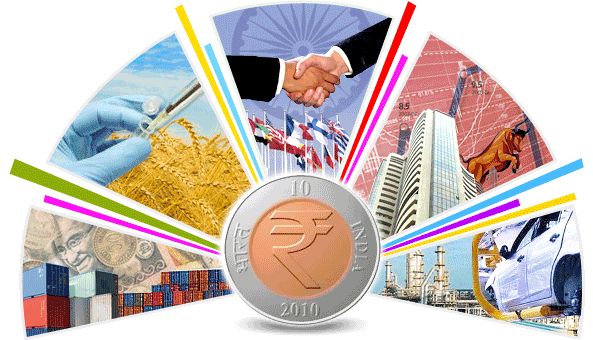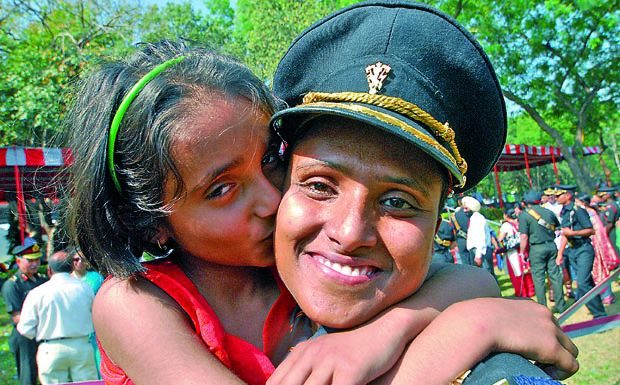The most essential requirement of any nation to develop further is to have food and shelter and basic amenities for all. And this needs to be set as a first priority. A poor with an empty stomach and down-and-out will hardly abide by the laws and rules or even talk about policies and development. For him the concern will be food and shelter first and foremost and by what means, will hardly matter.

Within India there live many India(s). The rich and content India, the poor and weak India, the mediocre India, the ailing India, the rejoicing India, the satiated India, the starving and famished India the India that reaches out to the space, the India that struggles hard to write it’s name. India, having a huge population and facing many challenges simultaneously, has to get rid of the evils of unemployment, poverty and crime prima-facie.
The top ten economic and development challenges for India looking at the present scenario are:
Unemployment, underemployment and Illiteracy : It is painful to observe that even after close to 70 years of independence India still struggles for these basic necessities. Adequate employment for its population is still a major concern as 40 percent of the employable youth is unemployed and of the employed lot 60% are under-employed. In spite of the government policies to promote self employment opportunities to youth, the policies and programs fail miserably. There are many factors responsible and needs immediate intervention.
Illiteracy is another bug eating up the nation’s promising future gradually. Although there are states with 100 percent literacy rates still a huge part of the population has never seen the face of school. Child labor, short of infrastructure and hygienic atmosphere and poverty is somewhere responsible.
There is a need of compulsory and forcible education till school level at least secondary education. The programs like mid- day meals and RTE have seen a change but we cannot deny the facts and figures of cases of drop-outs and absenteeism that had only seen an increase.
Budget deficits, Corruption and fiscal crimes : Money laundering, counterfeit currency, black and grey marketing and tax- larceny and of course bribe is a concern for the nation, we are already facing enormous budgetary deficits and challenges to overcome the same and the fiscal crimes are adding up to it all the more. When we talk of budget deficit we know that the public revenue is far less than public expenditure and fiscal crimes are affecting even the common people’s life.
Inflation : Ahead of the 2014 elections, the issue of high inflation was the uppermost in the minds of politicians, policymakers and the people. Consumer prices in India have risen at an average annual pace of 10 per cent during the past five years, and Indian households are bracing for another increase in the coming year. To check inflation, the Reserve Bank of India has raised interest rates and is continuously reviewing India’s monetary policy framework in line with recommendations from various fiscal committees. It is also essential to manage artificially induced national and international mechanisms. The central bank and Ministry of Finance are working together to analyze and understand the reasons and find ways to encourage investment and curb inflation.
Socio- Political despondency : It has been observed that the youth and working class is involved a lot in public smacks and strikes these days, sometimes to demonstrate the discontent and sometimes just because of political influence. On one hand the political and social turbulence affects the working, on the other the repetitive electronic media-coverage on the same is affecting adverse. The youth cannot remain unaffected by the negative approach towards everything and even if it is a political conspiracy at times by the fund-fed media. It creates disturbance.
Sustainable growth and Inclusive growth : Sustainable growth is a process that “fulfils the needs of the present without compromising the ability of future generations to meet their own needs.”
 The academics working on India questioned whether Indian growth was truly sustainable, or whether the country had failed to utilize the resources generated by investing much more in education and healthcare and developing infrastructure in an environmentally responsible way. It is time to assess how to enhance economic growth together with development initiatives including ways to improve food and water security while being in sync with the environment.
The academics working on India questioned whether Indian growth was truly sustainable, or whether the country had failed to utilize the resources generated by investing much more in education and healthcare and developing infrastructure in an environmentally responsible way. It is time to assess how to enhance economic growth together with development initiatives including ways to improve food and water security while being in sync with the environment.
For Indian growth to be sustainable, it must be inclusive to cover issues related to inequalities including accessibility, race, disability, gender, regions, caste , religions and more. While the gender gap in employment and political participation has been narrowing, there is much more to be done for the health and safety of girls and women. India needs to do more to ensure inclusive growth, particularly by improving social protection policies. The gap between the financial classes ought to be reduced.
Trade relations and amity with neighboring nations : The border disputes and cross-border trade play an important role in the development of any nation. On one hand trade relations with China and Pakistan have seen growth an improvement, on the other the border disputes claim many lives every year leaving the people disturbed an apprehensive about the real intentions.
- India-China trade: Despite various diplomatic standoffs in 2013, governments of both India and China remain eager to boost bilateral trade to US$100 billion in the next few years. No doubt, trade with China is a significant component of India’s economy. But trade relations remain one-way, with more Indian consumers buying Chinese goods than the other way around. India will have to address this trade deficit in the coming time by improving its export competitiveness and identifying more goods, services and policies to enhance balanced trade with China.
- India-Pakistan trade: In the past decade, India-Pakistan trade has increased from US$370 million per year to US$2.4 billion. But this is just a start: according to some estimates, the volume of a normalised bilateral trade regime could be as high as US$40 billion. The onus for progress on bilateral trade relations currently rests with Pakistan: despite repeated calls for improved India-Pakistan ties while there is little India can do to boost up the trade until Pakistan takes this key step, central government should continue its support for increased bilateral trade, as it would be for the benefit of the economies of both India and Pakistan while also helping to improve the political relations between the two countries.
Demographic dividend and increase in number of senior citizen : Approximately 210 million Indians are between the ages of 16 and 28 and India is well positioned to make the most of a growing population of working age. However, to reap the demographic dividend, India will have to manage the demand and supply of skills and labor carefully. While the government has introduced policies to improve access to education, much more needs to be done to improve the quality of education, standards of teaching, methods of examination, development of skills, vocational programmes, etc. In order to make the policies effective, the country should also address the challenges of bridging the gaps between children from disadvantaged and advantaged backgrounds being able to study together and better understand, respect and befriend each other. India should look to develop public-private partnerships and social entrepreneurship programmes that can ensure livelihoods for its young population.
While India seeks to yoke its young population to drive growth, it must also start planning for increased expenditure on health and welfare services for the elderly. As life expectancy increases: there will be more than 300 million Indians over the age of 60 by 2050. ‘Indians never seem to retire’ has been said of people in various sectors, particularly in urban areas, as many continue to work for several years after retirement. The shifting demographics will add to requirement of healthcare, welfare services, and families. Elderly women, who will outnumber men, are expected to be the most vulnerable. In addition, the challenges of elderly parents remaining in India while their children have migrated and single elderly citizen will be required to be addressed. It is required to develop policies to ensure that its older citizens too have healthy and happy lives.
Rapid urbanization and overlooked villages : The cities are growing at an unprecedented rate— on one hand the country’s urban population is increasing and expected to grow to 590 million people by 2030. This rapid urbanization is also expected to drive economic growth: according to some estimates, cities could generate up to 65 per cent of new jobs created until 2030 and produce 80 per cent of Indian GDP. On the other the villages and the agro based industries are endangered. India is still dependent upon rains and agriculture to a great extent but the villages being left out is a cause of concern. Agriculture needs to be focused upon and the people should be encouraged to take up agriculture as their main occupation to reap the economic advantages of urbanization as well as rehabilitation of the villages. Indian government must develop better policies to meet urban infrastructure needs through sustainable means and address growing urban poverty and inequality. While balancing the rural markets as well.
Infrastructure and Land reforms : The Land Acquisition Act passed recently received mixed reviews. There are concerns that the new law will drive up costs across the economy and make several industrial and real estate projects unviable, without necessarily delivering justice to farmers and landowners whose lands are acquired. These and other challenges related to land reform – particularly in the context of urbanization and the growing need for low-income urban housing – mean that India will have to continue drafting land-related legislation to ensure sustainable and equitable growth. Also infrastructural growth of the rural places is the need of the hour, tourism and agriculture can be promoted better if the infrastructure is balanced and improvised. The natural calamities affects the rural and left out areas leading to heavy losses of human and natural resources this needs immediate attention and action. Preparedness is the need of the hour.
Centre-state dynamics : The evident role of states in influencing economic growth, governance and policies has increasing become more prominent. States are driving localized growth, enhancing their own investments, and developing models that are being replicated across the country. But the centre needs to do more to facilitate state to state interaction and a centralized and shared control; the states should also be proactive in sharing of knowledge of best practices among themselves. The central government should also seek to do more to balance the uneven growth between states. Also opportunities should be searched for to make the states self sufficient and least dependent on the central government for assistance.
Along with the listed challenges it is observed that many more exist along with a need of a decent means of livelihood. The initiatives like community kitchen, subsidized meals and training opportunities and equality is the utmost need of the hour.






























Great Article! Thanks for explaining the economic problems, development issues , challenges Indian economy facing these days.